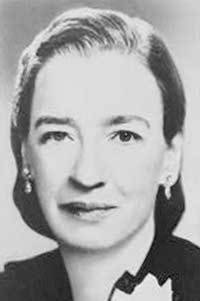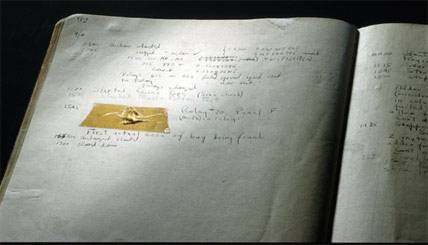| Grace Hopper - The Mother of Cobol |
| Written by Historian | |||
Page 1 of 2 Rear Admiral Grace Brewster Murray Hopper was responsible not only for the development of the Cobol language but also for making computers and computing more accessible. Throughout her career she was concerned in promoting programming skills to young people which is why Computer Science Education week co-incides with her birthday of December 9th. The history of computer hardware invention is mostly a male-oriented affair. This isn't unexpected given that the early computers had more to do with heavy engineering than logic. However when it comes to software the picture is a little different. It is generally acknowledged that the first programmer was female - Ada Countess of Lovelace but Ada was just the first in a long line of dedicated women programmers.
Perhaps the most famous, important and colorful of this army, or should it be navy, of female software experts is without doubt Rear Admiral Grace Brewster Murray Hopper. She was responsible not only for the development of the Cobol language but for the continuous pressure within the industry to make computers and computing more accessible.
Grace Brewster Murray Hopper, December 9,1906 - January 1,1992
Grace Hopper certainly suffered, at first at least, from the disadvantage of being a woman with an interest in technology. As a child it is reported that she dismantled an alarm clock to see how it worked. To find out how to put it back together again she dismantled another and so on until there were seven alarm clocks in pieces. Her parents let her off, taking it as a sign of an inquisitive mind. If she had been a boy even this small sign of engineering interest would have been leapt upon and nurtured. At school she did well at mathematics, especially geometry which was treated more seriously in those days. In 1924 she went to Vassar College (New York) to study maths, physics and engineering. She moved to Yale in 1928 to gain a masters degree and then a doctorate in maths and mathematical physics. The love of geometry stayed with her as is evidenced by the contents of her thesis "A New Criterion for Reducibility of Algebraic Equations" which she proved using geometrical arguments which were already very much out of fashion at the time! Even a gifted mathematician of Grace Hopper's quality could only look forward to teaching maths at no more than high school level - women were not expected to do any more. Still Grace managed to do more. In 1931 she started to work her way up through the Vassar teaching hierarchy - first as an instructor, then as an assistant professor and finally as an associate professor. Just before this she married Vincent Hopper and so changed her name from Murray to Hopper. They divorced in 1945, an event which left her free to pursue her contributions to computing without having to fit into the stereotype of the time. After the US entered the second world war Grace Hopper joined the US Naval Reserve. Her choice of the Navy was probably something to do with the fact that her grandfather was a Rear Admiral. Unlike the mythology that the army always assigns people to jobs that they were NOT qualified to do, the Navy had a clear idea of how valuable Hopper was. After some basic training she was assigned to the Bureau of Ships Computation project at Harvard. Although she had never been interested in computers she found herself at one of the foremost centres of computer development. At Harvard Howard Aiken had built the Mark I - a huge and slow electro-mechanical computer. It could do three additions every second! When Hopper arrived Aiken wanted to know where she had been for the past few months. He had told the Navy to skip the basic training because there was so much work to do and wasn't at all pleased that she had been wasting her time! Lieutenant Hopper was greeted by a book of instruction codes and set to the task of working out the interpolation coefficients for the inverse tangent function. At the time computers were first and foremost big printing calculators and the production of numerical tables occupied most of their functioning time. This was a role that Hopper would do much to expand to the more modern idea that a computer is a manipulator of symbols but this most important work still lay in the future. Her time with Aiken served as her basic training in computing. She learned to program. She learned the value of subroutines and co-operation, she was exposed to the writings of Babbage and she invented the term Bug.
A real bugWhether Grace Hopper really was the first to coin the term "bug" is an open question but her version of the story is at least fun. The Mark I was acting up and giving incorrect results. An internal examination located the faulty relay and there jammed between the contacts was a moth - beaten to death by the rapid opening and closing of the relay! The moth was removed and taped into the machine's log book with the note "First ACTUAL bug found".
The log book complete with bug is now in the
Clearly Grace and her colleagues had been long used to referring to programming errors as bugs before a real life bug was found. Aiken would come in and say "Are you making any numbers?" a phrase which hasn't really caught on and they would reply that they were "debugging the machine" - a perennial programmer's excuse ever since!
Manuals and tablesIt is clear that Aiken was a hard task master because Hopper also reports that like generations of programmers to come she spent many long nights working hard to make something work properly. As an aside it is also worth mentioning that it was her job to write the first manual for the Mark I. A job that Aiken gave to her with the words "you're in the Navy now" to dispel any doubts that she might have about completing the task! After the War Hopper spent some time programming actuarial tables for the Prudential and then teaching at Harvard. Her next important move was to the Eckert-Mauchly Corporation which was nearing completion of the UNIVAC. Before that machine was available she programmed the BINAC - a small binary machine built in secret for the Snark Missile project. This used an octal representation for its Op codes and Hopper quickly learned to think in octal - even to the extent of mistakenly adding up her bank balance in octal! It was at this time that she seems to have realized that the computer was a symbol manipulator rather than just a big calculator. This may have been due to her exposure to some of the more philosophical ideas of Babbage, or just because the machines were becoming more capable. Even if it was a natural progression it is clear that the majority of people, programmers included, tended not to share this now obvious viewpoint. <ASIN:026201310X> <ASIN:B0087EYG1U> <ASIN:0823938778> <ASIN:0716765993> |
|||
| Last Updated ( Friday, 09 December 2022 ) |


